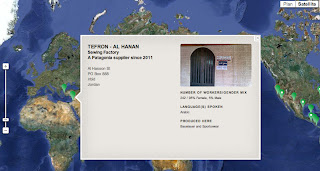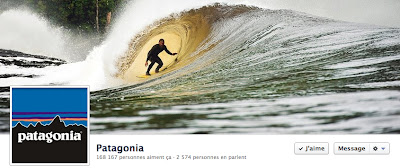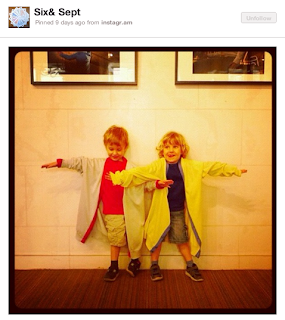Two great businesses, both the USA
Patagonia : born in the USA in the 1950's from the initiative of Yvon Chouinard, a young men passionate about climbing who had begun his own business of selling and producing climbing equipment. With the years, Patagonia has become known as one of THE references for alpinists, climbers, hikers and greenlovers of all kinds. If you want to know more about the history of the entreprise, do check out this page, filled with anecdotes about Yvon Chouinard and the evolution of the company.
Yvon Chouinard - founder of Patagonia
Its product universe today keeps on revolving around the mountain yet with an extended number of products: ski clothing, hiking shoes, climbing equipment and others...
Salomon: a French company, created in 1947, was also created in the mountains and was selling skis from the beginning. Today, it sells hiking, running and skiing products (both alpine and cross-country skiing).
Georges Salomon - founder of Salomon
Like Patagonia, it is one of the main actors of the market of outdoor leisure and sports.
There are differences in products between the two companies (Salomon for example constructs skiis, which does not do Patagonia), but their universes are very close. Likewise, both companies put forward their environmental engagement. For example, Patagonia with the Common Threads initiative (a double pact between Patagonia and people, in which both parts engage in significantly reducing their environmental impact - Patagonia by conceiving products respectful of the environment, and people by recycling, reusing and repairing products instead of buying new ones as often as possible).
Patagonia's Common Threads Initiative
The similarities between the two brands made me wonder : with such similar valors, business history and product universes, how do the two brands communicate ? And most of all, do they have a different communicational style ?
Site analysis
Patagonia's website has four sections : products, environment, videos and blog. You couldn't do clearer.
A very nice thing they have done is the footprint chronicles. Remember when I told you about Rapanui, an awesome british eco-textile company which made a map for each and every one of their products : the origin of the textile, where it was conditioned, where it took the boat... ? (if not, you can check it out here). Well, Patagonia has done something quite similar.
With their footprint chronicles they have created a map on which they have indicated all their suppliers (both textile mills and factories). You can directly click on one special point, and tada information about the supplier appear: the address, the date since when Patagonia started working with them, the number / gender of workers, the languages spoken, and what product is made there.
Footprint Chronicles - Patagonia
On the other side, Salomon's website is divided according to products : you have to choose your product universe (alpine ski, cross-country ski, trail running or hiking) and then a dedicated section opens up. Or you can choose to navigate more globally by type of product division (shoes or clothing).
This division, quite intuitive enables a visitor to go straightly to what he desires : whether it is a specific pair of shoes or he searches for products to buy for his next hike.
Moreover, in addition to these e-business divisions, a small toolbar right at the top of the Salomon website indicates the existence of four (even five) dedicated universe websites : salomonfreeski, salomon snowboard, salomon running, salomon racing and salomon nordic. Then, in each of these websites, you can have sections for : the presentation of the team, presentation of the gear, videos (or even webTV), and the link a blog dedicated to the subject of the site.
Salomonsnowboard.com
Even though the multiplicity of sections in Salomon's websites allow people to have access to very rich and multiple content, it must be hard to manage such important flow of information : imagine having to create different pages in different websites just for one product. On a customer viewpoint, the navigation is quite simple : not as simple as Patagonia's, but it's still quite easy to find what you are looking for.
Interactive content : blogs and videos
As I've just presented, both companies have blogs. The different blogs of the company are well fed with relevant content: Patagonia and Salomon have clearly understood that behind the concept of blog is not only product promotion but broadcasting of news that potentially interest their customer. For example, the last post of Salomon Nordic was posting pictures of Kikkan Randall, worldcup champion.
Likewise, both Patagonia and Salomon use videos
- Patagonia has chosen to broadcast videos about their ambassadors (aka the people who test and promote their products). At first, I thought it was videos made by the ambassadors themselves but it appears that they are videos made by Patagonia. These videos are really beautiful to watch, ambassadors talk themselves about hiking, climbing, nature... and make you want to go hiking : a nice moviemaking in between National Geographic beautifully styled videos and amateur sports videos.
Lynn Hill at Hueco Tanks - A Patagonia video
However, promoting self-made videos could have been a great initiative, and a good way to create a relationship between the brand and its customers. And you could have imagined a total opening of video posting to people who may not be Patagonia ambassadors but at least Patagonia customers and lovers.
A slight false note is the presentation of the videos themselves on the website : as beautiful as the videos are, they are not enough valorized on the website.
- Salomon's videos are on the contrary very well promoted, and surf more on the hype curve of sports videos. Haven't you noticed how many sports videos people share, tweet about today ? The popularization of very high-tech cameras such as proHD has without a doubt contributed to a dramatic increase in the number of sports people who just film their own sports exploits and post them on the Internet. Well, Salomon has very well exploited this change, and use the same graphic codes and tone than in these videos (for example, the amateur side of filming oneself)
And, moreover than just making nice-looking videos about, let's say, a snowboarder going down a mountain, Salomon also aims at creating content. For example, it has created a series of episodes about running : interviewing members of the Salomon Running team and letting them express what it is they like about running, and their advice to fellow runners.
A last good point about Salomon's videos is that they don't hesitate in turning themselves in ridicule. You can for example watch the video they made about their own ski vacation; for a brand that has over half a decade of existence, the tone is really young, and very refreshing.
Social networks
And last of all but certainly not least, my analysis of their social networks strategy
Salomon's social networks strategy is to have one global account for Salomon, and then dedicated pages to the universes of freeski, running, nordic, racing and snowboarding. The global Salomon page has more than 32 000 fans, but generates little user-created content. The posts made by Salomon receive few likes (a maximum of 60) and very few comments.
But on the other hand, the dedicated pages generate more interaction, especially when Salomon posts photos.
Yet, there is not enough participation from the users themselves : unlike other companies which I've talked about in my other articles, comments on the Facebook posts of the brand are not massive. Moreover, the brand does not directly incite the consumers / sports lovers to interact directly with the page (whether it is with games or photo contests). Instead, the brand generates vertical content about the last news, the results of the Salomon team. Too bad that users are not more incited to interact, because I'm sure they have a lot to say !
Likewise, Salomon uses its twitter accounts to give updates about what is going on. For example, the Salomon freeski account (@salomonfreeski) is described as "Random updates from the salomonfreeski.com team).
Patagonia's Facebook profile is centralized and gathers more than 168 000 fans, with an average of 100 likes and 20 comments per official post. If we crack up the numbers, the score of Patagonia is higher than Salomon in terms of engagement per user.
Patagonia's Facebook account manager has cleverly arranged the account as to balance pictures and articles, so that the lecture of the timeline doesn't get too boring. The titles of the posts are very short (no more than 140 characters) and echo either to a past event about climbing, the firm, about news of the different stores (a quite moving note was for instance posted by a Japanese employee of the Sendai store, that had been impacted by the tsunami), about Patagonia ambassadors : a very diverse number of posts that doesn't leave time for users to get bored.
But then still, the users are not quite incited to participate in that content and post themselves content. It is true that Patagonia answers the Facebook users when relevant comments are made, but maybe more space could be given to consumers to express themselves.
I might have sounded harsh in my last statement, so let me make an amend : in terms of reactiveness, both the Facebook and the Twitter (@patagonia) account managers of Patagonia are proactive : answers are made to users very quickly, which tends to generate a positive interaction between users and the brand.
My conclusion / advice :
- Go hiking ! (for readers)
- Keep opening up your content to your users : Patagonia and Salomon are great examples of successful companies that have evolved in their core competencies and products, and have succeeded in maintaining their competitiveness despite the arrival of competitors. Now, the stakes rely on emphasizing customer fidelity and relationship !
But on the other hand, the dedicated pages generate more interaction, especially when Salomon posts photos.
Salomon Freeski's Facebook page
Likewise, Salomon uses its twitter accounts to give updates about what is going on. For example, the Salomon freeski account (@salomonfreeski) is described as "Random updates from the salomonfreeski.com team).
Patagonia
Patagonia's Facebook account manager has cleverly arranged the account as to balance pictures and articles, so that the lecture of the timeline doesn't get too boring. The titles of the posts are very short (no more than 140 characters) and echo either to a past event about climbing, the firm, about news of the different stores (a quite moving note was for instance posted by a Japanese employee of the Sendai store, that had been impacted by the tsunami), about Patagonia ambassadors : a very diverse number of posts that doesn't leave time for users to get bored.
Patagonia's Facebook page
I might have sounded harsh in my last statement, so let me make an amend : in terms of reactiveness, both the Facebook and the Twitter (@patagonia) account managers of Patagonia are proactive : answers are made to users very quickly, which tends to generate a positive interaction between users and the brand.
My conclusion / advice :
- Go hiking ! (for readers)
- Keep opening up your content to your users : Patagonia and Salomon are great examples of successful companies that have evolved in their core competencies and products, and have succeeded in maintaining their competitiveness despite the arrival of competitors. Now, the stakes rely on emphasizing customer fidelity and relationship !















